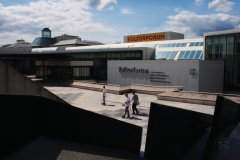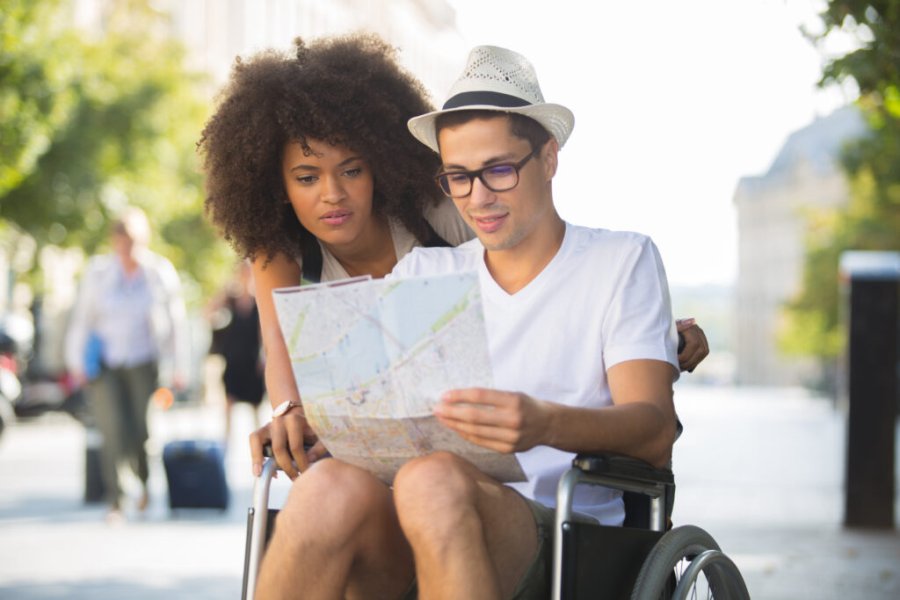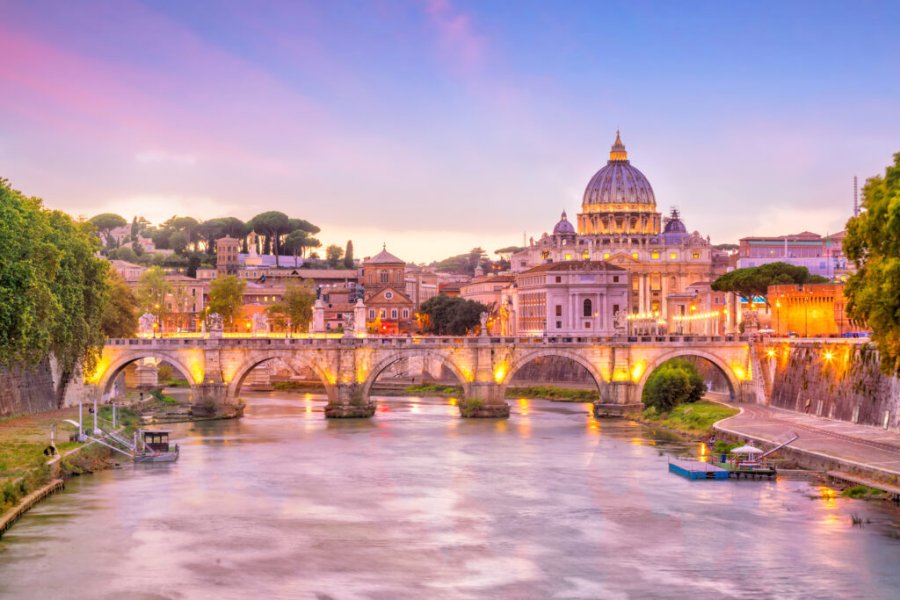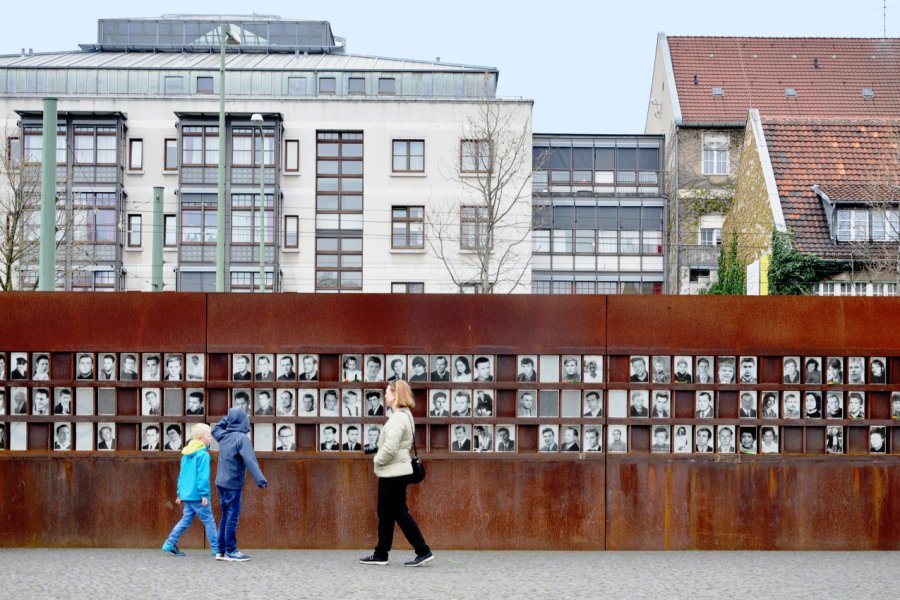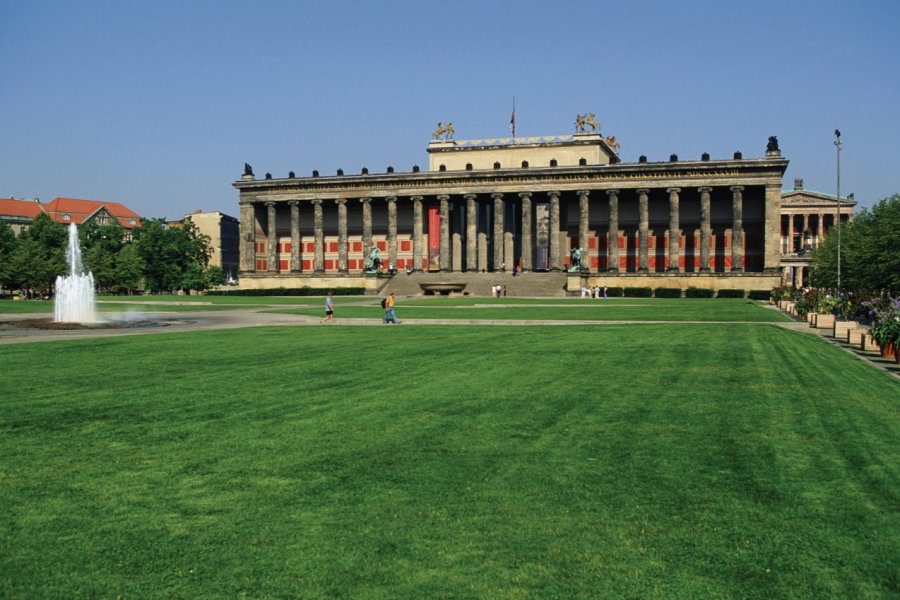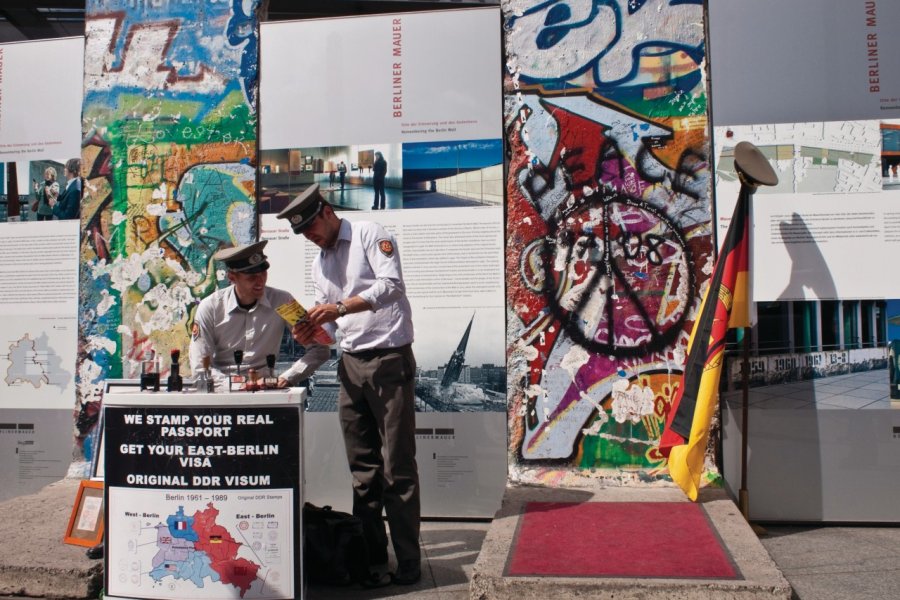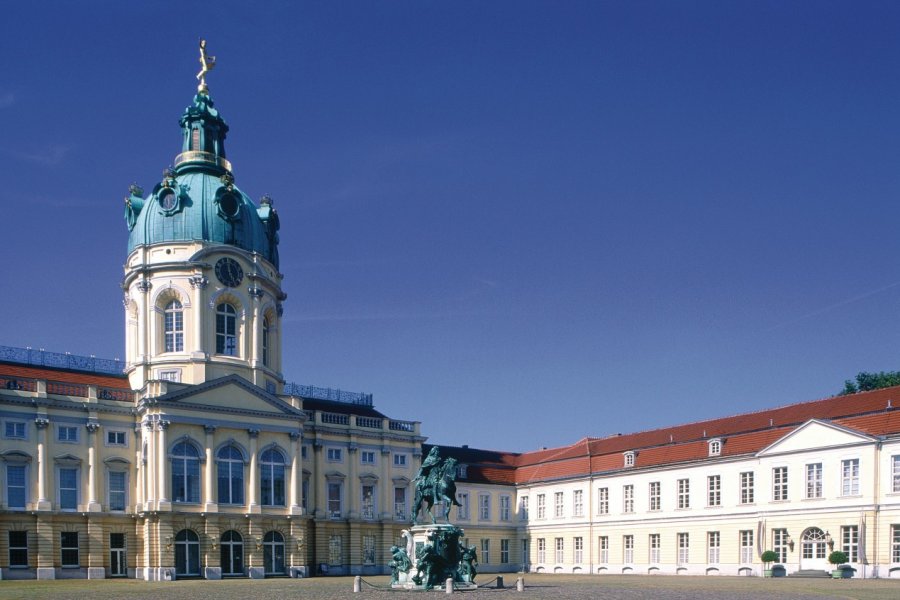Travel guide Berlin
Creative, heterogeneous, lively, Berlin is a city in permanent mutation. On one side, the euphoria of an active market economy, on the other, alternative communities. As the capital of a reunified Germany , the city gives an impression of incompleteness with its immense architectural diversity and its disorganized urbanism, which contrasts with other German cities such as Hamburg, Cologne or Munich. It is a modern and multicultural metropolis, which is resolutely turned towards the future; which does not prevent it from ardently preserving its history. From the Museum Island, which contains some of the most impressive treasures of antiquity, to the Baroque palaces of Charlottenburg and Sanssouci , to the Brandenburg Gate and the memorials of the 20th century, you will see all the beauty, extravagance and cruelty of the past. A heavy past, marked by two world wars, the horror of the camps, the partition of the city, and a slow and laborious reunification. Berlin can also be visited through its cafés, its monuments, its large shopping avenues and its nightlife. Don't forget that Berlin is alive during the day, thanks to its prodigious cultural and historical heritage, but also at night, in its bars that never close, its unlikely clubs and its crazy cabarets. To help you discover the city from all these angles, the non-exhaustive list of establishments selected in this tourist guide includes the places that are not to be missed and many that are known only to "insiders". It's up to you to make your stay a Berlin experience...
What to see, what to do Berlin?
-
Book an activity
-
Customized travel
- Addresses to visit Berlin
When to go Berlin ?
Summer is the most pleasant time to visit Berlin, which then takes on a completely different face. Enjoying the high temperatures of a continental climate, parks, lakes and café terraces are stormed and good humour reappears with the return of the sun. Swimming pools (Freibad) and open-air cinemas (Freiluftkino) open their doors and everyone gathers in the Strandbars (outdoor bars, equipped with sand) and Biergarten. Winter can be very harsh in Berlin, but when the wind from Siberia rushes down the main avenues, it is also the time of the magical Christmas markets and the toboggan runs at the Teufelsberg. Be aware that during trade fairs, congresses and other festivals, hotels are quickly full, so remember to book early for such events.
Weather at the moment
Suggested addresses Berlin
Travel Berlin
-
Find a hotel
-
Car Rental
-
International e-SIM package
-
Find a local agency
Find unique Stay Offers with our Partners
How to go Berlin
How to go alone
It is very easy to travel alone in Berlin. Public transportation and hotels are plentiful, so you can make your choice. To avoid wasting too much time queuing up in front of each monument, consider buying your tickets in advance on the Internet or on site the day before. You can also save time by buying tickets for a few extra euros.
How to go on a tour
There are many tour operators that offer stays. The most common ones are getaways (3 days and 2 nights or 4 days and 3 nights) and long weekends. Prices vary depending on the means of transportation chosen and the time of booking; last-minute offers are the most interesting. In Berlin, because of the location, there are many cultural trips, but the prices are higher.
How to get around
It would be useless and expensive to take a car into Berlin. All the places of interest, even the most remote, are accessible by bus or subway. There are offers for a few days or for a week. Outside of Berlin, the most important attractions in the area can be reached by public transport, such as Potsdam.
Featured articles Berlin
Discover Berlin
Berlin is an astonishing city, where the ups and downs of its turbulent history never cease to surprise, and to discover it is to come face to face with its tortured past. Until the end of the 20th century, the city was at the heart of the conflicts and tensions of the Cold War. Today, it fascinates because it is the story of a rebirth, of an unexpected comeback. The architecture of the reconstruction after the fall of the Wall is fascinating for its creativity. Many major architectural firms were involved in rebuilding a city whose urban fabric is still riddled with gaping wounds. But Berlin has come to terms with its scars. The city also holds a privileged place on the international art scene: its theaters, operas and museums, which have a long tradition, are world-renowned. As for the independent art scene, the Freie Szene, it is essentially forward-looking.
Pictures and images Berlin
The 12 keywords Berlin
1. #Ampelmännchen

The little pedestrian man at the traffic lights has become an emblem of Berlin. First introduced in East Berlin, it was later used throughout the GDR. After the fall of the Wall, the city council wanted to replace it with the classic West Berlin pedestrian lights, but it was fiercely defended. Today, it can even be found in West Berlin.
2. #BER
Known under the BER code, the new Berlin airport should have opened in 2012. By dint of repeated scandals, its opening is constantly being postponed, making it the object of ridicule preferred by Berliners. Eight years after the initially planned inauguration, its opening has not been prevented by the paralysis caused by the covid-19 pandemic.
3. #Döner

Legend has it that the doner kebab was invented in Berlin by a Turkish immigrant, Mehmed Aygün, in order to seduce German customers who were used to eating on the go. Quite different from its French counterpart, the Berlin kebab is always filled with red cabbage. Very cheap and hearty, its success is not denied among the night owls.
4. #FKK
The culture of the free body(Freie KörperKultur) is well established in Germany. It is not uncommon in some parks or on the beach to see Germans in the simplest of clothes. Don't be surprised if you go to the sauna in Berlin, swimsuits are often not allowed. "So stop wearing textiles!
5. #Kiez
Berlin is a monster city with an area seven times the size of Paris. There are 12 gigantic districts (Bezirke), which are in turn subdivided into neighborhoods (Stadtteile). Berliners identify an additional subcategory: the Kiez, a few blocks, a supermarket, bars and shops; their little neighborhood life.
6. #Bears

According to a popular misconception, Berlin got its name from the bear(Bär). It seems that this symbol is due to the Margrave of Brandenburg, Albert I, known as "The Bear". Since 1280, the bear has been the heraldic animal of the city. You will find it everywhere: on the flag, as a statue, as a stuffed animal in souvenir stores, etc.
7. #Späti
Inseparable from Berlin life, Späti - short for Spätkauf - are where you'll find beer, spirits, chips, chocolate and other foodstuffs just down the street. Some Späti even have their own terrace where you can enjoy a beer on a summer's evening.
8. #Reunification

The symbolic act of Reunification was undoubtedly the fall of the Berlin Wall on 9 November 1989. Then it was a long process of reweaving between the two parts of the city. For example, the entire transport network had to be rethought. As the capital of the Federal Republic of Germany, Berlin has regained its place among the world's major cities.
9. #Schnauze
Literally, the "Schnauze" refers to the mouth of an animal. But when Germans speak of the "Berliner Schnauze", they are referring to the outspoken nature of the inhabitants of the capital. It is a depreciatory and rather contemptuous way of characterizing Berliners, who are often thought to be a little rough and uncooperative.
10. #Szene
The Berlin scene, known as Szene, is a notion that covers a way of life, fashions and trends, outings, political trends... The Szene in Berlin is fundamentally alternative, but it also covers the different party places, from the most incongruous to the most posh clubs... The Szene is Berlin on the move.
11. #Wegbier
Beer is the drink of choice in Berlin - as it is throughout Germany. The "Wegbier" refers to the bottle of beer that you drink on the way to the nightclub or on the street. So don't be surprised to see Berliners drinking like this on the subway. Different country, different customs.
12. #WG
Shared housing - or WG for Wohngemeinschaft - is very developed in Berlin. While it used to be easy to find a flat share in Berlin, the city's success has led to an influx of newcomers, making the search more complicated and competitive. To get into a WG, you have to be prepared to pass a real casting!
You are from here, if...
You wait at the red light. Berliners are probably less disciplined than Munichers but more so than Parisians. It is better to wait for the green light to cross the road and avoid standing in the bike lane.
You pay in cash. Most stores and department stores allow you to pay by card, but restaurants, cafés, bars, Spätis, etc. do not, and most of them display "Cash only".
You leave a tip (Trinkgeld). It is customary to round up the bill and tell the waiter when you are ready to pay how much you will pay him, including the tip. This way, you will get the change accordingly.
You understand the Berlin humor. In the rest of Germany, Berliners are known to be a bit rough around the edges. The harsh frankness of the capital's inhabitants is often a mark of humor.
You hug each other goodbye.

